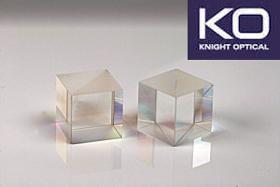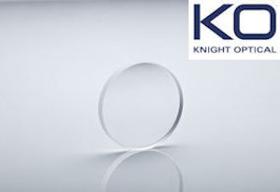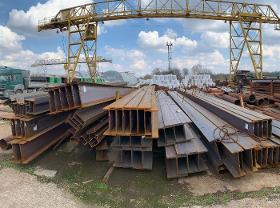- europages
- >
- COMPANIES - SUPPLIERS - SERVICE PROVIDERS
- >
- beams
Results for
Beams - Import export

KNIGHT OPTICAL (UK) LTD
United Kingdom
Optical Sorting Systems are a widely utilized technology used within the food industry; most particularly used in processing harvested foods such as fruits and vegetables, most notably potatoes, and nuts. Optical sorting was designed to help improve product quality, maximize throughput and increase yields. Within an optical sorting system there are four main components, the feed system, the optical system, the image processing software and last the separation system. The optical system utilizes lights and sensors housed above and below the flow of the products being inspected. It works by using a combination of light and sensors to illuminate objects; and to do this Beam-Splitters are one of the optical components used. Within the camera used in the system a Beam-Splitter cube is used to divide the light source coming from a single lens, into different channels; and each channel is filtered to a specific spectral region Read PDF for more data
Request for a quote
KNIGHT OPTICAL (UK) LTD
United Kingdom
Knight Optical can offer Planoconcave Lenses for use within Optical Systems. We supply a range of Planoconcave lenses for a range of applications. All individually QA checked and metrology tested for quality to ensure parts meet customer specification. Supplied in a range of sizes and shapes with custom coatings tailored to meet your individual applications. Knight Optical supply precision optical components to customers with Optical systems. Planoconcave lenses are simple lenses with a plane surface and a concave surface and form a moderate quality image close to the axis. Concave lenses have a broad range of applications including, focussing and control of laser beams, moderate quality imaging and other optical instruments. In a multi-element optical system they reduce the power of the system. Used on their own they form a diverging cone or virtual image. A typical use for concave lenses would be in a beam expander. For more information read the PDF ….
Request for a quote
KNIGHT OPTICAL (UK) LTD
United Kingdom
Need to measure the fluorescent properties of a component with your Spectrometer but you feel like something’s missing? Maybe it’s Knight Optical range of Stock Dichroic Filters, ideal for use within Fluorescence Microscopy and Spectroscopy. For Fluorescence Microscopy and Spectroscopy, dichroic filters are used as beam splitters within the microscope system. They are used as an edge filter at a tilted angle of incidence (typically 45°) to direct the illumination of an excitation frequency towards the sample of interest, and then at an analyser to reject the same excitation frequency but passes a particular emission frequency. Dichroic filters offer superior contrast between transmitted and reflected wavelengths; having negligible absorption. Having a dielectric coating they are perfect for high power applications and they do not show the strong fluorescence of certain glass filters. For more information read the PDF
Request for a quote
KNIGHT OPTICAL (UK) LTD
United Kingdom
Within medicine the use of polarised light was first introduced back in the70’s; since then it has come leaps and bounds. How it has been used to help with imaging skin pathologies, when the skin is illuminated by linearly polarised light it causes backscattering of the superficial layers of the skin where cancer often arises. This superficial backscattered light can be distinguished from the diffused reflected light when using a detector. Polarised Beam-Splitter Cubes, Sheet Linear Polarisers, and Sheet Circular Polarisers are often used within detection devices for this type of skin pathology imaging. Knight Optical hold a large inventory of Polarisers for use within Skin Cancer Detection devices. •We stock large sheets up to 1270x480mm in some cases; we can cut these into special shapes at short notice. •Mounting options are also available. •Special Glass laminating to CAB polarisers •Special AR coatings. Read PDF for more information
Request for a quote
KNIGHT OPTICAL (UK) LTD
United Kingdom
Optical Coherence Tomography otherwise known as OCT is an advanced technology used specifically within retinal imaging and analysis. This non-invasive technology was designed to provide highly detailed images of the retina as well as the optic nerve. It uses light waves to take cross-section images of your retina, using OCT it is possible to see each of the retina’s distinctive layers. Within OCT’s, a light source with a broad optical bandwidth is used for illumination and is split by a Non-Polarising Beam-Splitter into 2 paths referred to as the reference and sample arms. The light from both the reference and sample arms are reflected back and combined at the detector. An interference effect is seen at the detector in the reference and sample arm only if the time travelled by the light is nearly equal. Read PDF for more info
Request for a quoteDo you sell or make similar products?
Sign up to europages and have your products listed

STALEVAR COMPANY LLC
United Kingdom
I beam (I beam) is a type of metal product used for supporting structures and floors of automobile and railway bridges, tower, bridge and gantry cranes, crane girders, supports and other supporting structures. The main task of the beam is to carry the strength force to all types of permissible loads. Of all the presented type of metal products, it is the most durable. Depending on the bearing load, the selection of the beam is made. Do not overload the metal structure with the permissible size of the beam, as it may become unjustifiably expensive and difficult to transport. There are certain formulas and criteria for the selection of the required brand and size of the beam. If necessary, our qualified specialists will help you as much as possible to select the required sizes of metal products. The length of the I beam, as a rule, is 12 meters or more, and the width of the flange is from 10 to 50 cm. You can contact us by mail - marketing@stalevar.com or by phone +380675624220.
Request for a quote
CECIL INSTRUMENTS LIMITED
United Kingdom
Cecil Instruments now include four different models within their trusted Aquarius range of spectrophotometers. These multi-lingual double beam spectrophotometers may be operated in a choice of six languages. They provide superb performance, have powerful ESEF software and are fully accessorised. The range includes spectrophotometers with pharmacopoeial compliance, wavelength ranges between 190 to 1,100 nm, bandwidths, both fixed and variable, from 0.5 to 4 nm and PC control options. These versatile Cecil Instruments’ spectrophotometers may also be pre-programmed for use with proprietary test kits, for a vast range of assays, dedicated to water and effluent analysis. Life science and food and beverage pre-programmes, are available too. These spectrophotometers bring reliability, high performance, speed, versatility and convenience to R & D, Quality Control and Academia.
Request for a quote
FINE OAK BUILDINGS LTD
United Kingdom
Meticulously handmade oak beam covers/casements are decorative casings designed to hide structures such as steel joists (RSJs), concrete lintels therefore giving the impression of a beautiful oak structure or element. Our oak covers and casements are made from solid oak, designed and manufactured to look as realistic as conventional oak beams.
Request for a quoteResults for
Beams - Import exportNumber of results
9 ProductsCompany type